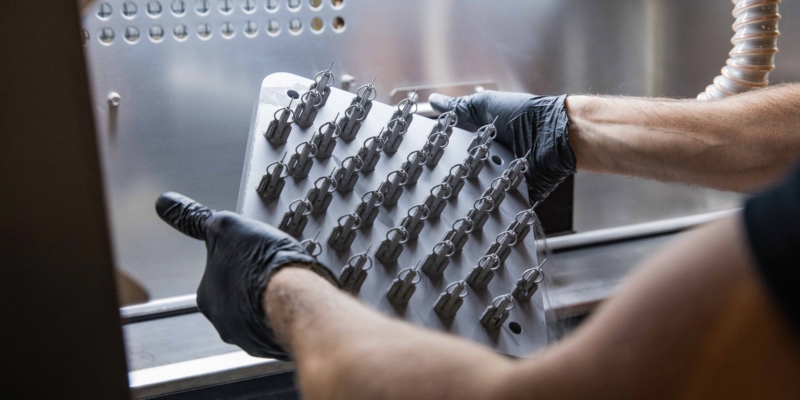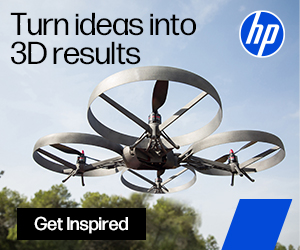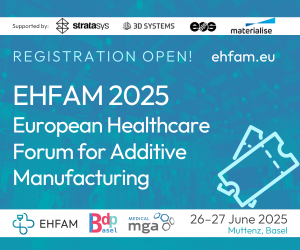3D Printing Financials: Protolabs’ Network Strategy Offsets Market Challenges in Q3
In a challenging market, Protolabs‘ (NYSE: PRLB) third-quarter 2024 results show a steady performance, driven by its 3D printing segment and stronger productivity. The company’s unique factory-network model helps keep it strong and profitable, even as the wider manufacturing sector faces ongoing headwinds.
Protolabs reported revenue of $125.6 million for the third quarter, a 3.9% decline from last year’s record third-quarter revenue of $130.7 million. Despite the drop, the quarter exceeded analysts’ expectations, pointing to the company’s ability to navigate market challenges.
Earnings per share for the quarter were 29 cents, rising to 47 cents when adjusted for one-time items, such as costs related to the closure of operations in Japan and stock-based compensation expenses. Protolabs decided to exit the Japanese market in 2022, citing “underperformance and low profitability” after years of limited revenue growth. With the plant likely closed by late 2023, associated costs continued to impact Protolabs’ financials into the third quarter of 2024 and could now allow the company to focus on more profitable regions.
Although net income dipped from $8 million last year to $7.2 million, Protolabs continues to generate cash flow, reporting its highest quarterly operating cash flow ($24.8 million) since 2020.
One highlight of Protolabs’ services is the 3D printing division, which generated $21.4 million in revenue, showing steady performance with only a 1% decline from last year. This segment is important to Protolabs’ growth, accounting for approximately 17% of the company’s total revenue.
Protolabs’ 3D printing segment offers fast prototyping and small to mid-sized production runs that attract industries needing custom solutions, like healthcare and automotive. The company has invested heavily in automation, new materials, and quality controls, making its 3D printing services a strong part of its broader network and well-suited for large-scale, high-precision orders, especially in fields like medical instrumentation.
Protolabs’ factory-network model, which combines in-house manufacturing capabilities with an external network of partners, plays a key role in its 3D printing offerings. This setup gives the company flexibility to handle demand across various projects by either producing parts in its factories or outsourcing through its network based on the order size, complexity, or location.
In Q3, revenue from Protolabs’ network of external manufacturing partners grew by 11.6%, bringing in $25.3 million. This increase helped balance out a 7% decline in revenue from the company’s own factory-based production operations. Essentially, as revenue from in-house manufacturing dropped, the growth in the network segment helped reduce the overall impact on the company’s total revenue.
The network’s gross margin increased from 32.8% to 35%, helped by AI-powered pricing and sourcing algorithms. These systems use data to set optimal prices and identify the best partners for materials or production based on factors like cost, demand, and supplier reliability. This approach helps Protolabs deliver 3D printed parts efficiently, broadening its reach and boosting profit margins even in a fluctuating market.
CFO Dan Schumacher reassured investors during an earnings call: “In the third quarter, our business generated its highest quarterly operating cash flow since 2020—before the acquisition of 3D Hubs. This is a testament to the profitability of Protolabs’ model against any macro backdrop, driven by our unique combined factory and network model. However, our revenue growth is flat year-to-date, and I believe we can accelerate our growth by continuing to invest in our priorities and execute our strategy under the realigned organizational structure.”
In fact, Protolabs’ new organizational setup is helping it serve customers more accurately and efficiently. By giving regional sales teams a customer focus and centralizing order fulfillment, the company hopes to make operations smoother, improve how it fills orders, and support its long-term growth goals.
CEO Rob Bodor explained to investors during the quarterly earnings call that the realignment was initiated to separate regional go-to-market teams from a global fulfillment organization. He explained that this structure allows regional teams to focus directly on customer relationships to drive growth while the global operations team focuses on fulfillment efficiency across factory and network resources. This change, he notes, is aimed at accelerating growth and creating value for shareholders.
Schumacher further emphasized that this new structure allows Protolabs to reduce areas of redundancy, improve margins, and drive healthy profitability for the business. He says that the investment in automation within their factories supports this realignment by making a better job in terms of managing labor costs.
As part of its realignment, Protolabs also announced it would close its prototype injection molding facility in Eschenlohe, Germany, and discontinue direct metal laser sintering (DMLS) services in Europe. Instead, to fulfill European orders for metal 3D printing and injection molding, the company will rely on its external network partners and its North Carolina site. By closing these operations, Protolabs aims to cut costs and improve profit margins, hoping to reduce overlapping operations and make better use of its resources.
Protolabs served 22,511 customer orders in the third quarter, a slight decrease from last year. Revenue per customer contact dipped 1.5% year-over-year yet remained up 4.7% year-to-date, indicating a shift toward higher-value production orders. Additionally, customer engagement with factory and network services increased by 35%.
For the last quarter of the year, Protolabs expects revenue between $115 million and $123 million, with projected non-GAAP earnings per share between 28 and 36 cents. Management also anticipates a typical seasonal decline in revenue due to fewer working days and holiday-related slowdowns.
Looking ahead, Protolabs sees growth potential in its 3D printing and production services. The company’s ability to offer quick turnaround times, even for complex and low-volume orders, remains a competitive advantage. Key client partnerships, such as with Harley-Davidson‘s Factory Racing team, show Protolabs’ advantage in high-performance and specialized manufacturing.
Despite its solid quarterly performance, Protolabs faces ongoing challenges. Revenue growth has been flat so far this year, reflecting the impact of broader economic issues and a slowing manufacturing sector. The company may also have to handle possible drops in customer spending if the economy worsens. What’s more, Protolabs’ growth plan is still new, with less than 5% of customers currently using both its factory and network services—a promising but still emerging path for future growth.
Subscribe to Our Email Newsletter
Stay up-to-date on all the latest news from the 3D printing industry and receive information and offers from third party vendors.
Print Services
Upload your 3D Models and get them printed quickly and efficiently.
You May Also Like
3D Printing Financials: 2024 Results In, Nano Dimension Gears Up with Markforged and Desktop Metal
Nano Dimension (Nasdaq: NNDM) is going through a major transformation. In just a few weeks, the company has finalized not one, but two major acquisitions: Desktop Metal and Markforged. On...
Velo3D Secures $22M Metal 3D Printing Powder Supply Deal with Amaero
Velo3D (OTCMKTS: VLDX) has signed a major new agreement with metal 3D printing powder manufacturer Amaero (ASX: 3DA). The five-year deal is valued at USD $22 million and centers around...
3D Printed Heat Exchanger Specialist Conflux Technology Expands into the UK
Melbourne’s Conflux Technology, a specialist in using additive manufacturing (AM) to produce heat exchangers, is opening a business hub in the UK. The new site, which will open sometime in...
Rob Higby: How Continuum’s Scrap-to-Powder Model Caught Siemens’ Attention
Continuum Powders has spent over a decade working on a bold idea: why mine new metal when high-quality material is already flowing through today’s factories as scrap? Now, thanks to...
































